I clearly remember Lance Armstrong’s Trek 5500 that he rode to win the 1999 Tour de France. A mate of mine had a replica model of that bike and I can’t remember ever lusting after something so much in my life.
In more recent times I haven’t felt an overly strong connection with Trek’s brand. I can’t put my finger on exactly why, but when I rode the Madone 7 during it’s launch in 2012 and felt how wonderfully it rode, this connection was made again.
The new Madone 7 has undergone some tweaks and minor changes since my first and only ride and I had the opportunity to spend a couple weeks test-riding one to reacquaint myself and feel the differences.
Before the ride
I’m not going to say that the new 2014 Madone is a quantum leap ahead of the 2012 edition. It was a wonderful bike to ride then, just as it is now.
There’s very little to distinguish the 2014 Madone 7-Series from the 2013 model from a visual standpoint. The changes to the new Madone are:
- Lighter Weight: 725gms for 7 Series (56cm frame) with U5 Vapor coat paint (which only adds 5g to the frame - standard paint adds 50-100g to the frame).
- Newly designed chainstay for better braking and ride performance.
What continues is the 700 Series OCLV construction, aero frame design, and endless possibilities through Project One (we’ll talk about that later). Determined to make the frame as light as possible, Trek uses OCLV carbon for the dropouts, water bottle bosses, and front derailleur mount.
Trek also saves weight and adds itself an aero advantage by using semi-integrated brakes. The front brake tucks into the fork and the rear brake hides under the chain stays, allowing Trek to save even more weight by removing the brake bridge. It was explained to me that if you think about the way water flows off a wheel, the positioning of these rear brakes take advantage of the driest place on the rim to get the best possible braking in the wet. I honestly can’t tell a difference in braking performance from a traditionally placed calliper in the short time I’ve had, but what the repositioning of the brakes does for me is makes a very nice clean rear-end.
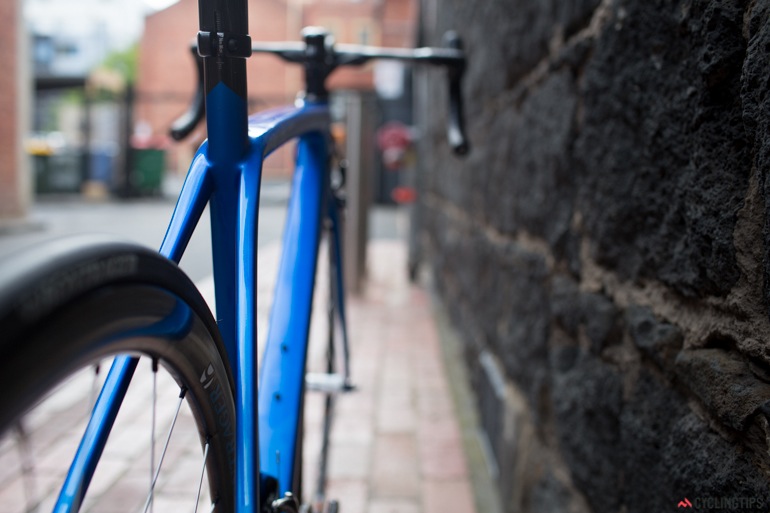
The rear triangle has an elegant aesthetic with the rear brake positioned under the chain stays.
The bike is originally equipped with Bontrager callipers, but you can upgrade to Shimano’s Dura-Ace 9000 brakes if you wish (note, there was a recall on these Bontrager brakes last week. More info here. No failures have been reported in Australia and only applies to 2013 models)
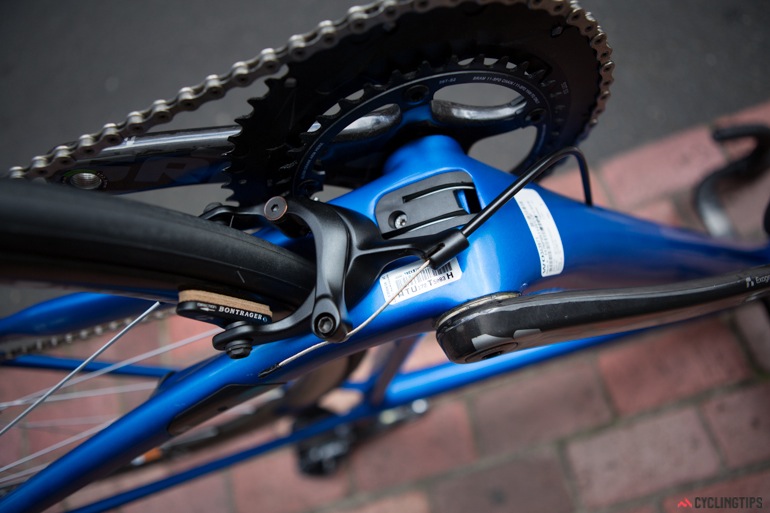
Instead of traditional brake placement on the rear stays, it is situated under the rear chain stays which is said to improve braking performance and aerodynamics.
Serviceability
I’ve spoken with a couple mechanics familiar with servicing the Trek Madone, and there hasn’t been anything that’s come back negative. The rear brake is easily adjusted and serviced - which was my first question. Trek uses a proprietary bottom bracket called the BB90 which sometimes comes back a mess when it hasn’t been properly kept clean, but it’s easy to work with and requires no tools to service.
Geometry
The Madone comes in two different types of geometry which they call “H1″ and “H2″. The longer, lower H1 fit lengthens front/center for more stability. It’s the Madone’s most aggressive and “racey” position. It offers the lowest hand position options available for Madone, and is the choice of many of their pro riders. The H2 features a slightly higher head tube to put less strain on your back and neck. With no need for high-rise stems or spacer stacks, the frame setup still looks the goods.
The test bike that I rode had the H1 geometry and its comfort was one of the most standout attributes. The frame geometry feels spot-on and all I needed to do was adjust the saddle height to feel right at home. I recall thinking the exact same thing a couple years ago when I rode the previous edition of the Madone 7.
You can see both H1 and H2 geometry charts here on Trek’s website.
After the ride
So, the ultimate question - how does it ride? It’s hard not to use clichés, but the bike is everything Trek says it is. Stiff but not too stiff, lively, handles exquisitely, very comfortable and simply feels fast. Descending is where the spectacular handling really comes into its own I regret that I didn’t have the chance to do some long descents over 5 kilometers. Sadly, I never had the chance to ride this bike on the big mountains of the Victorian Alps.
One of my favorite parts of this bike is the Bontrager Aeolus D3 clincher wheels (click here for our previous review). Wheels can change a bike’s characteristics completely and if I had a Madone with these wheels, I’d find absolutely no reason to change them - ever. These wheels are exceptionally wide at the rim (27mm) and softens out a bike that might otherwise ride a little too harsh for my liking.
Project One
Okay, we’ve established that the Madone is a fantastic bike to ride. I’ve spoken with half a dozen owners and there’s no disagreement there. What really sets the Madone apart from the rest of its competitors is Trek’s “Project One“.
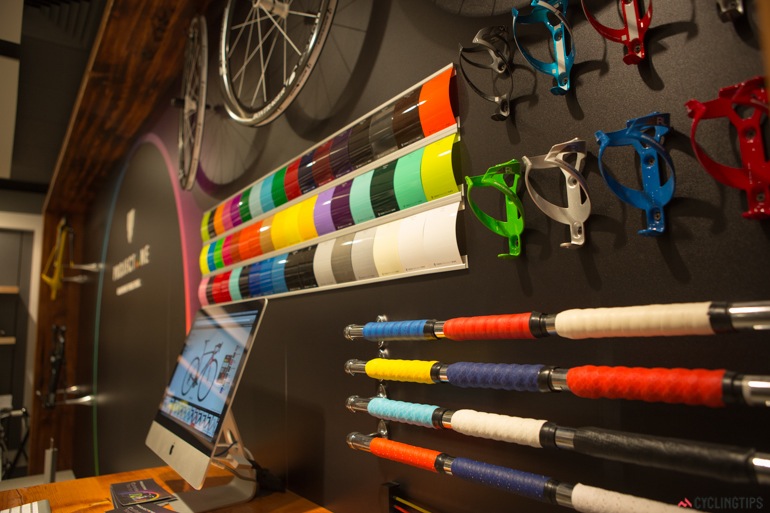
True customisation on a production bike is something that was lacking until Project One came along. Not only can you customise your paint job to get almost any design scheme you can imagine, but you can choose every component from your bottle cages to your bartape and everything else in-between. Have a look at their promo video on the execution behind Project One..
Depending on the complexity of your build and design, lead times range from 30-60 days (Trek says the average is 45 days).
Half the fun is designing your own dream scheme. Have a play on their website. I’d love to see what you come up with.
Pricing
The stock 7 Series models start at $8,499 AUD for the Madone 7.7 with mechanical Dura-Ace and Bontrager RXL wheels. The model that was tested, the Madone 7.9, has an RRP of $12,499 (equipped with Di2 and Aeolus carbon clincher wheels). The frameset, comprising of frame, fork, headset, stem, seatpost and brake callipers, has an RRP of $4,799.
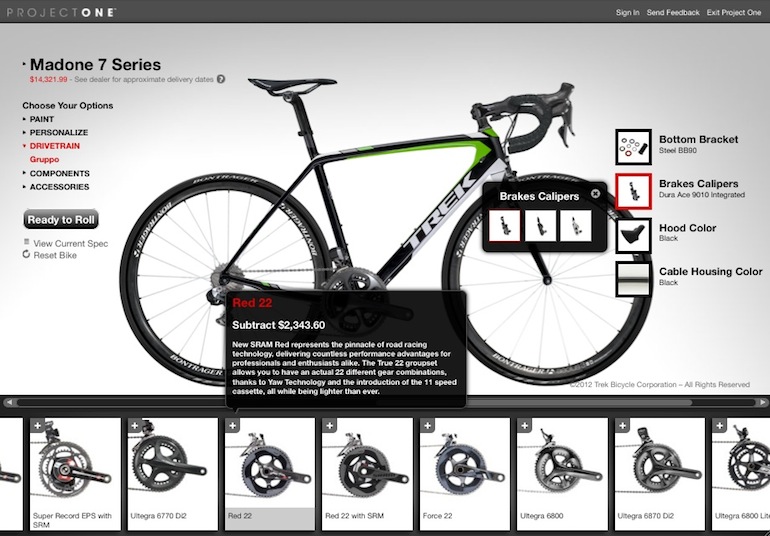
The Project One program offers and endless number of paint and spec possibilities, so RRP’s will widely vary. When you are building your Project One on Trek’s site, it calculate the RRP, and gives an indication on how a change will affect the price.
Final thoughts and summary
I can’t fault the Madone 7 anywhere. My only objection is purely on a personal aesthetic preference - I prefer a more traditional looking bike with round, not squared-off tubes. However, I’d be willing to compromise my morals because of the superb ride. It’s a well-designed bike that is equally well executed and the Project One offering is exactly what’s missing in the market.

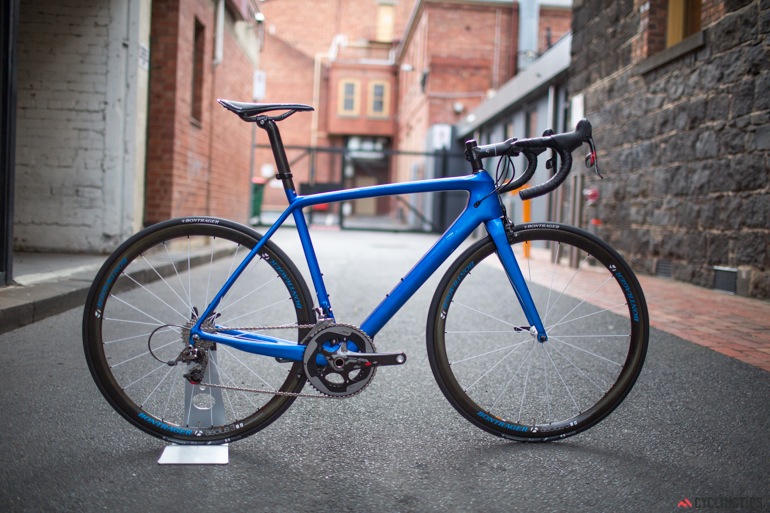
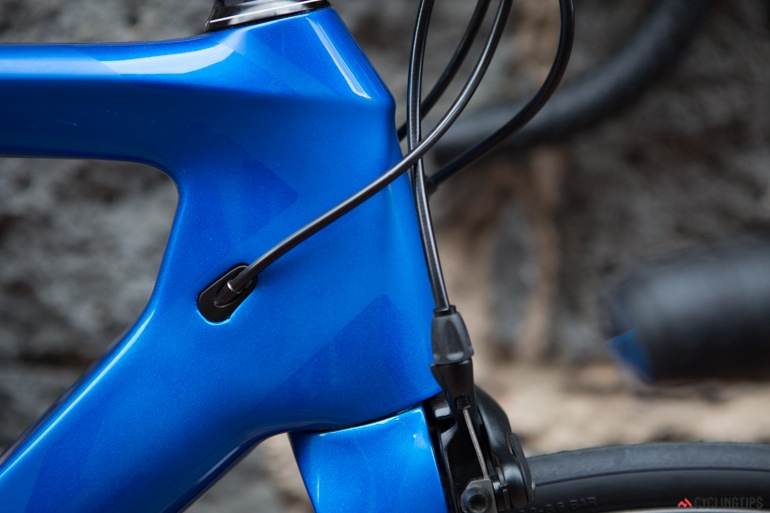
Front brakes are tucked away into the fork.
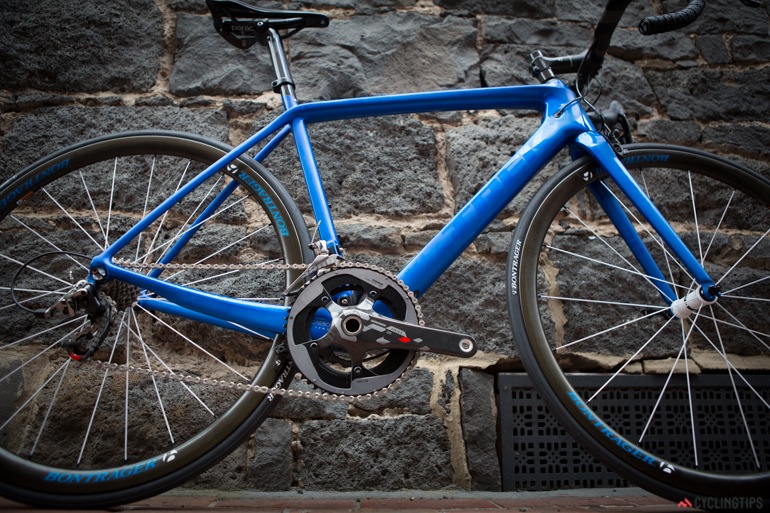
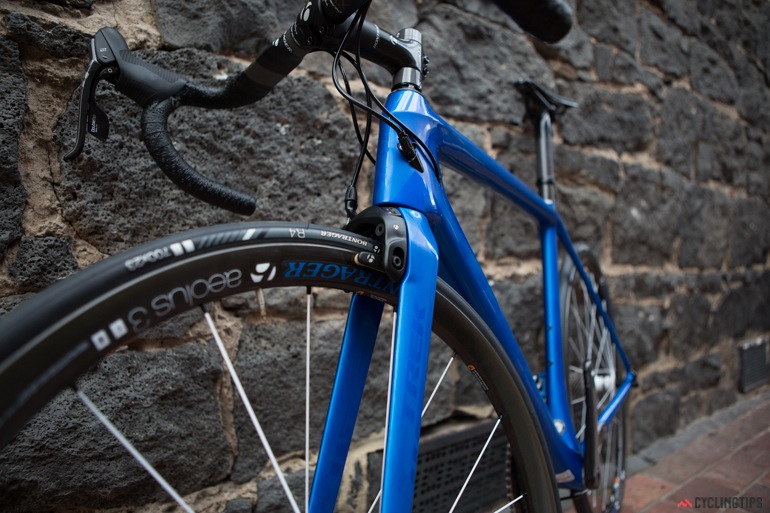
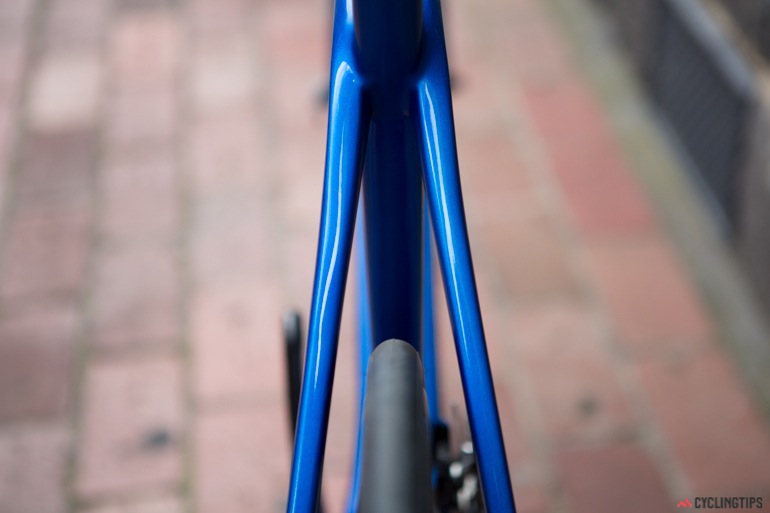
The absence of the rear brake on the stays gives a clean look on the rear end.
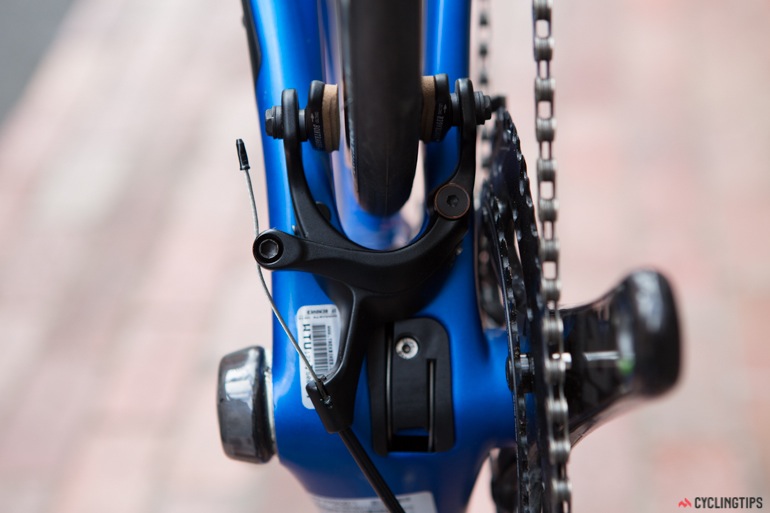
Instead of traditional brake placement on the rear stays, it is situated under the rear chain stays which is said to improve braking performance and aerodynamics.
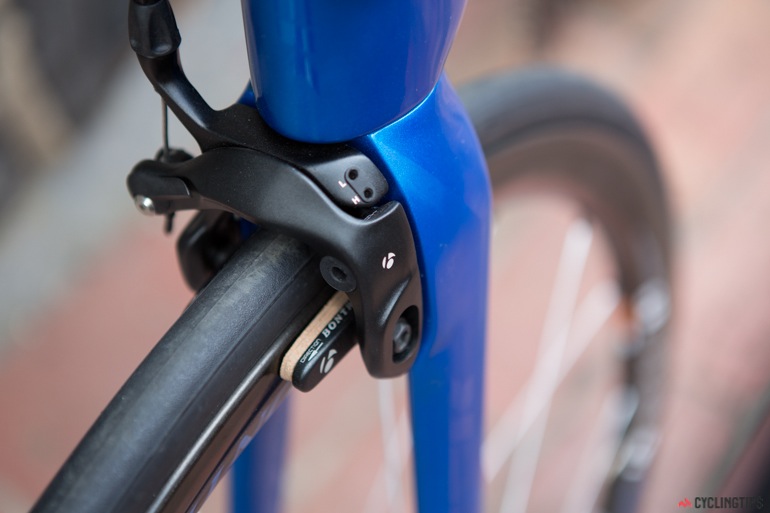

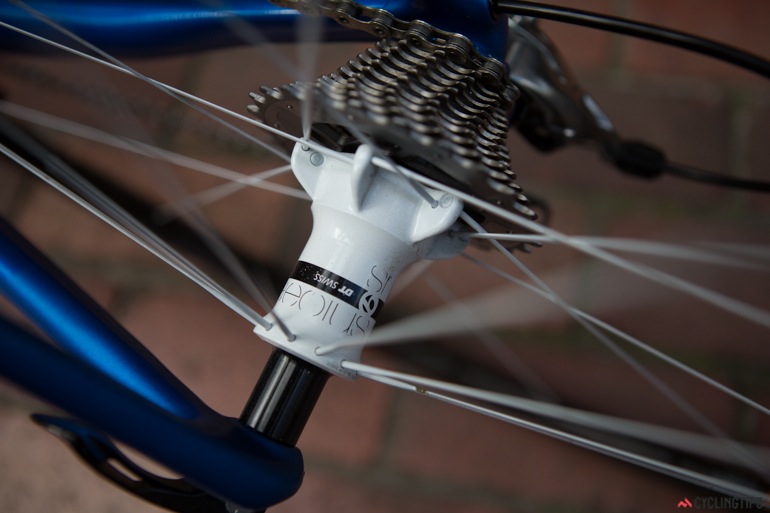
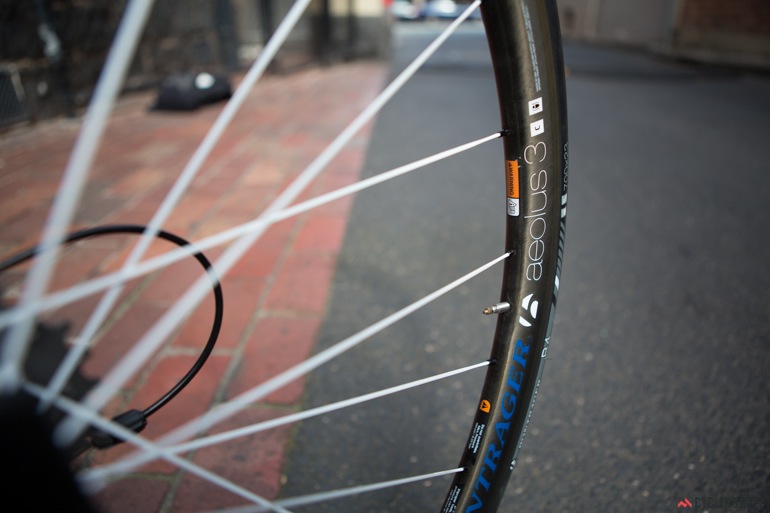
The Bontrager Aeolus D3 clincher wheels are one of the best things about this bike.

You can see the drive side rear chainstay shape which is new in this edition of the Madone. This is said to reinforce stiffness so that the braking platform is more stable.
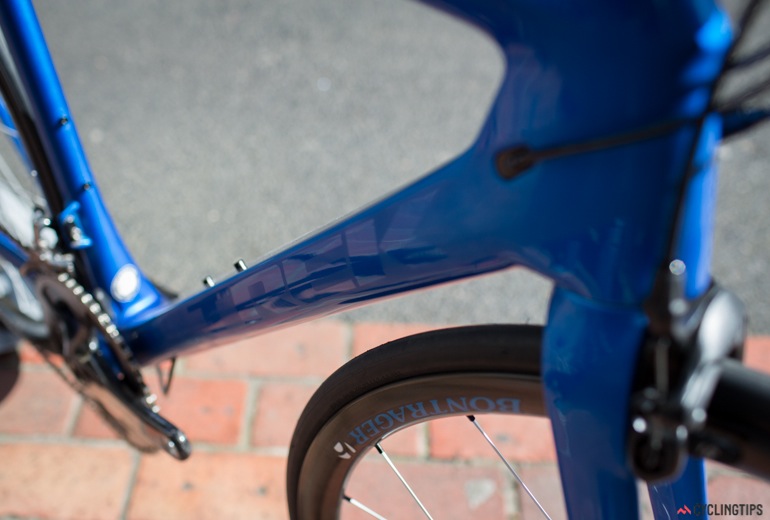
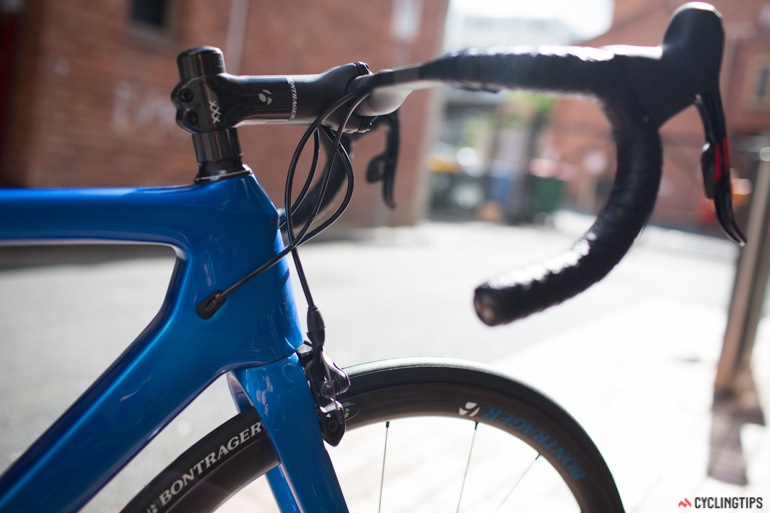
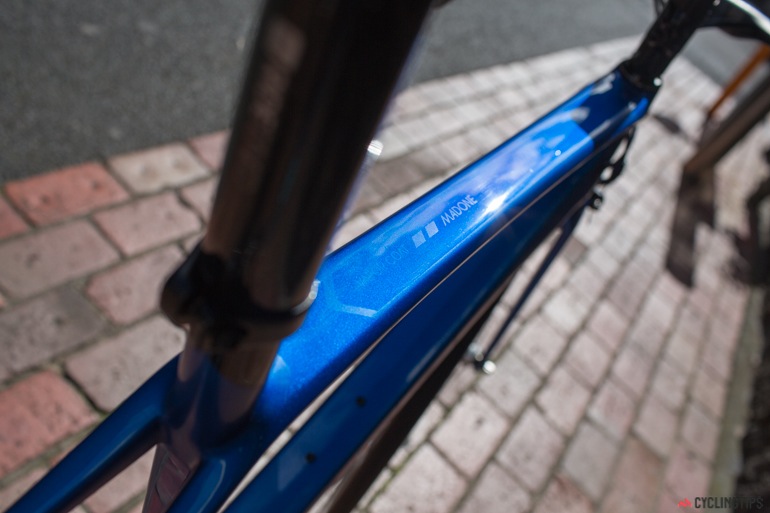
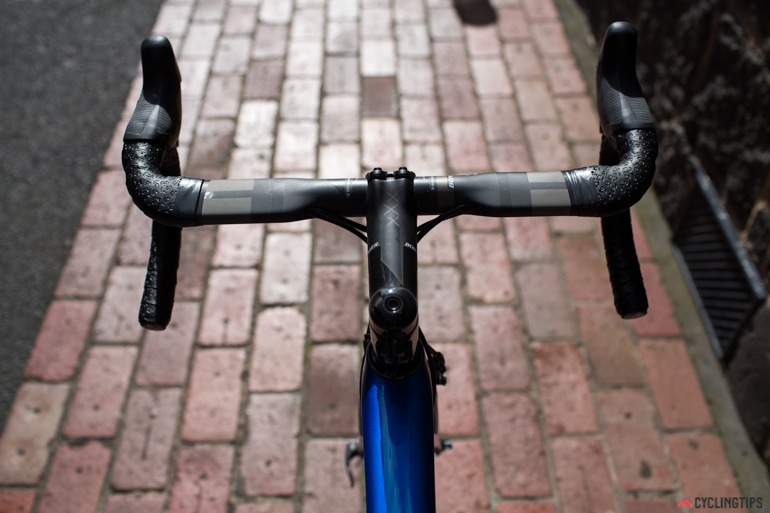
The XXX Aero bars were slightly too thin for my liking, but there are lots of other options available.
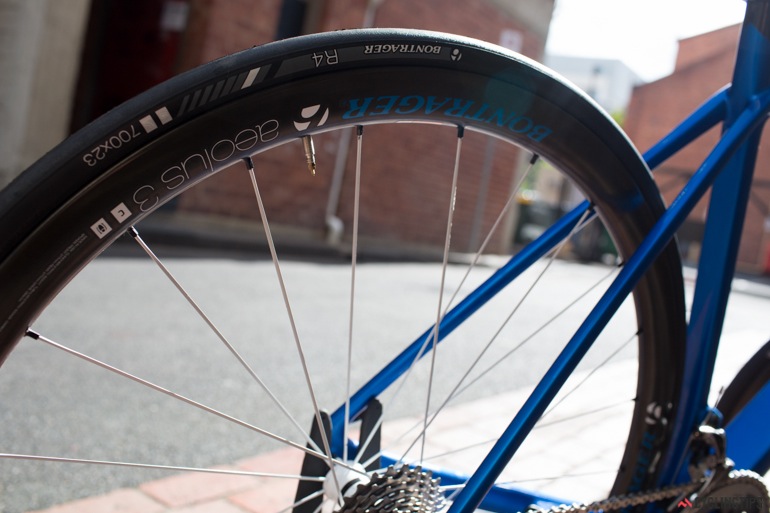
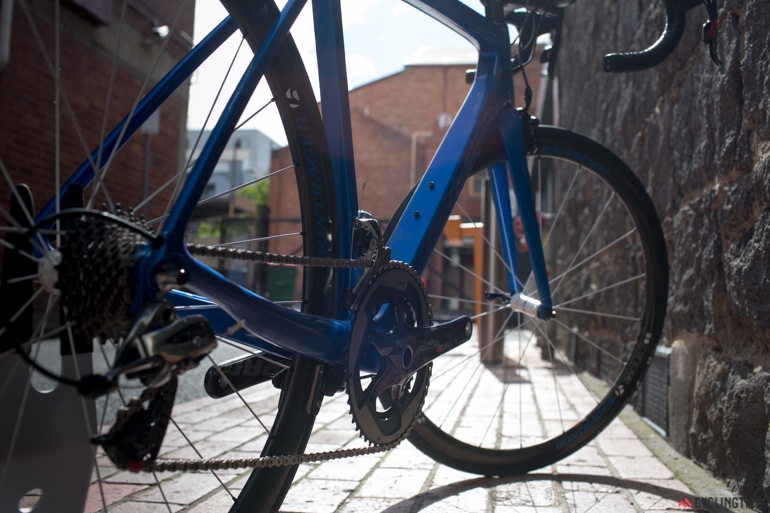
You can see the drive side rear chainstay shape which is new in this edition of the Madone. This is said to reinforce stiffness so that the braking platform is more stable.
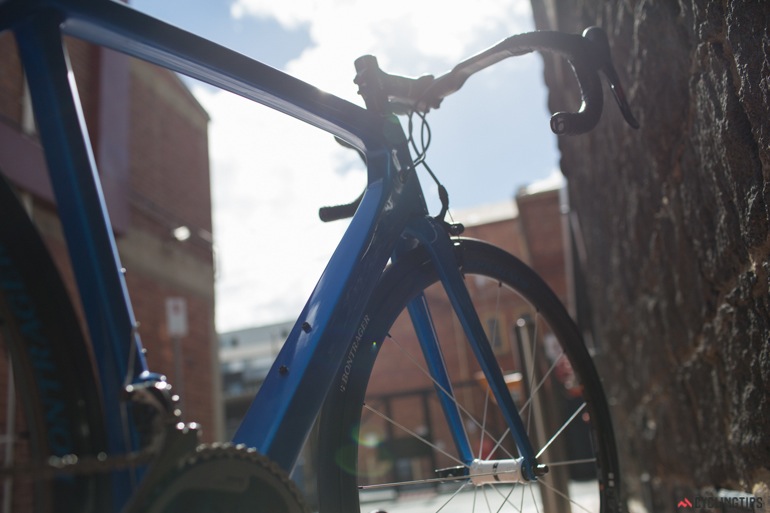
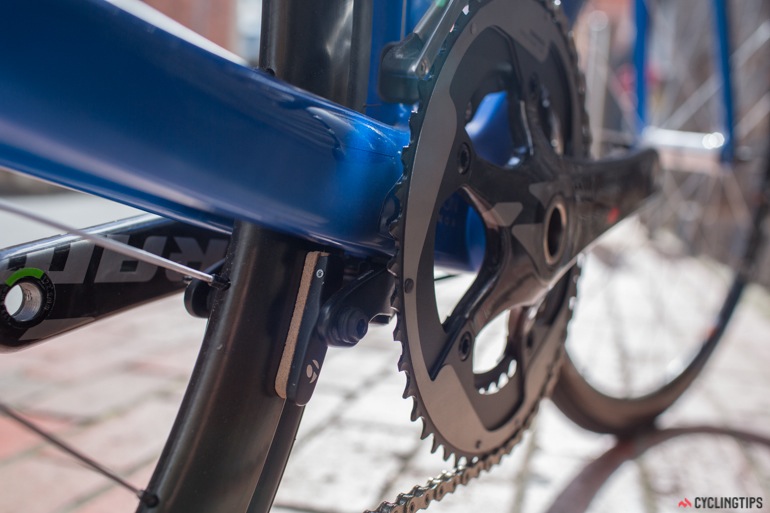
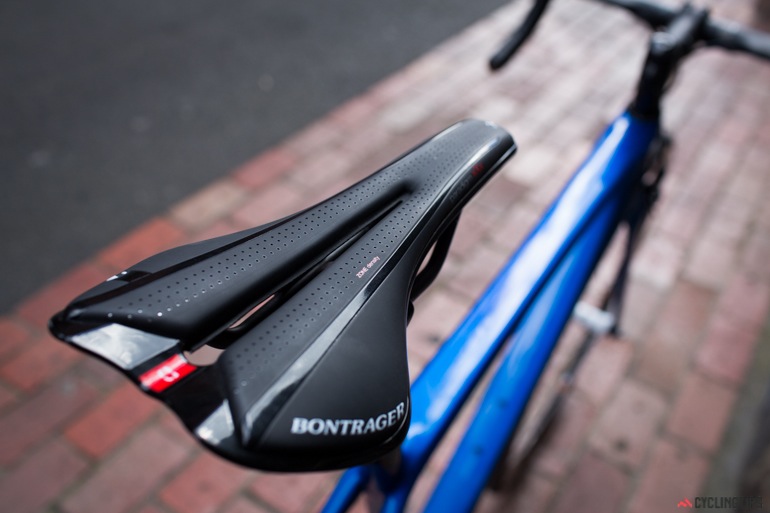

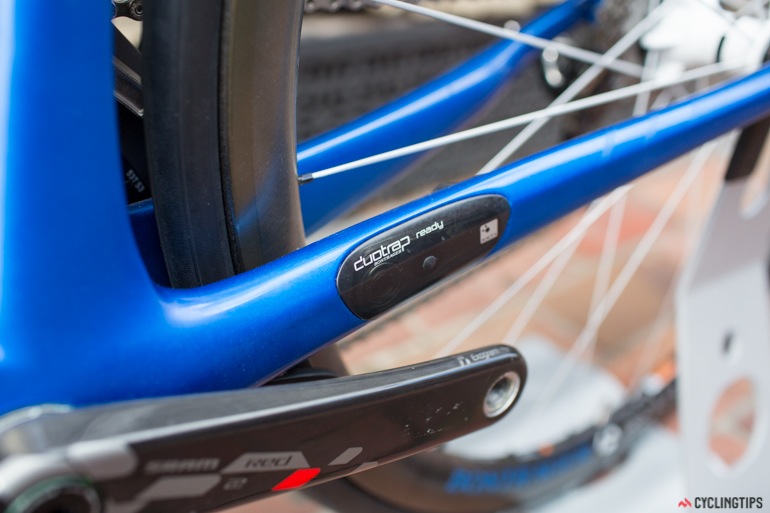
DuoTrap speed and cadence sensor integrated into the frame.
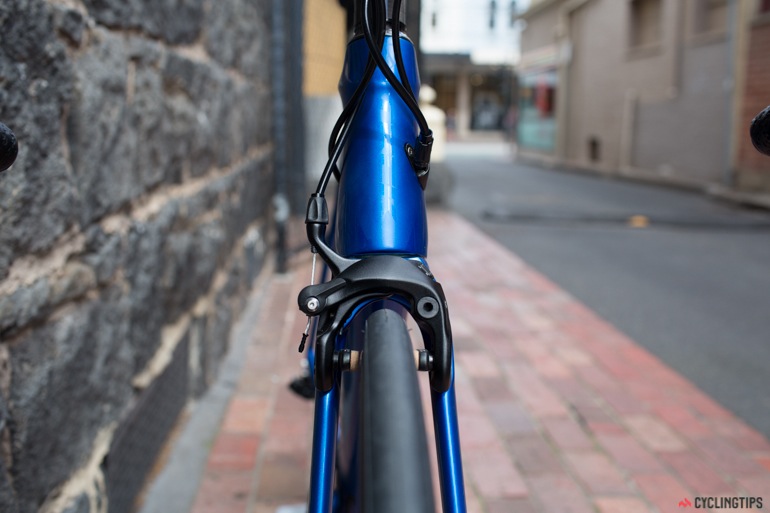
On the right side (facing the bike) is the rear brake quick release.

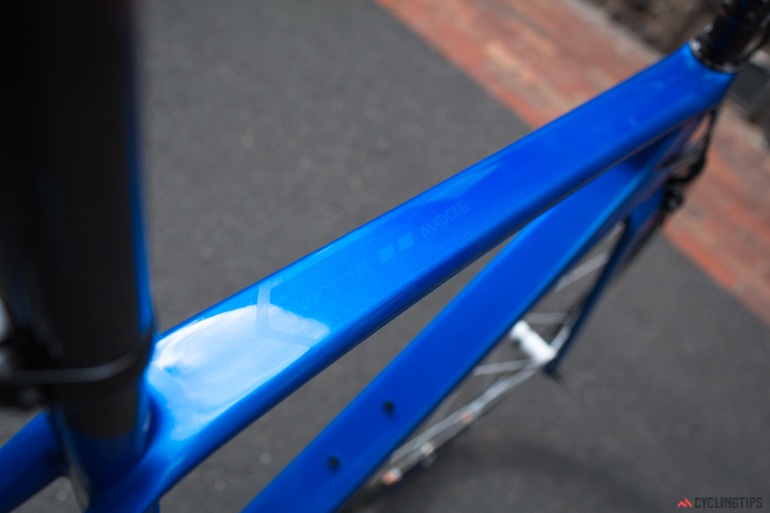
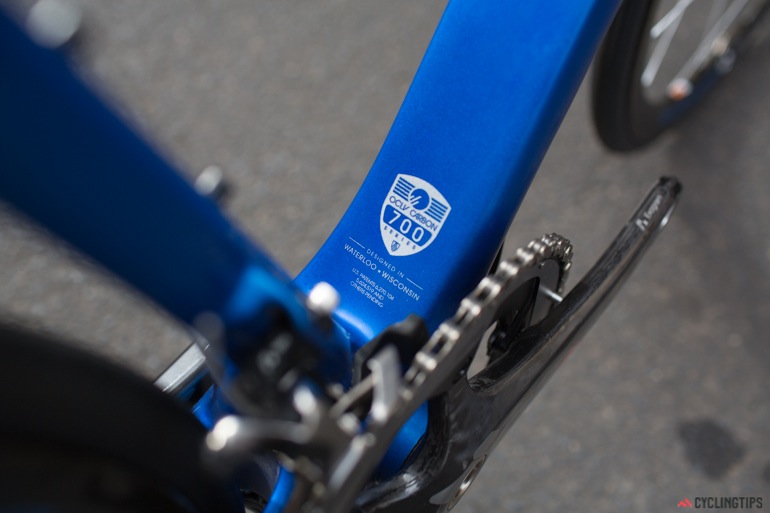
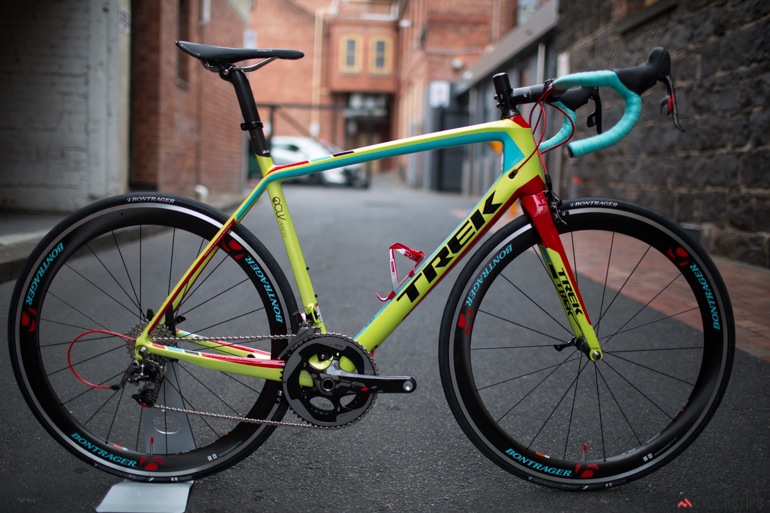
The Madone 6 series is not the bike that we test rode, but is an indication the customisation you can acheive.
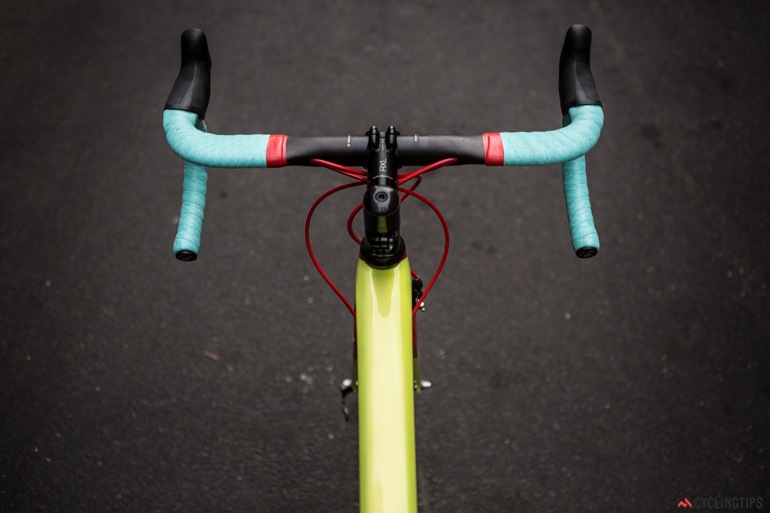
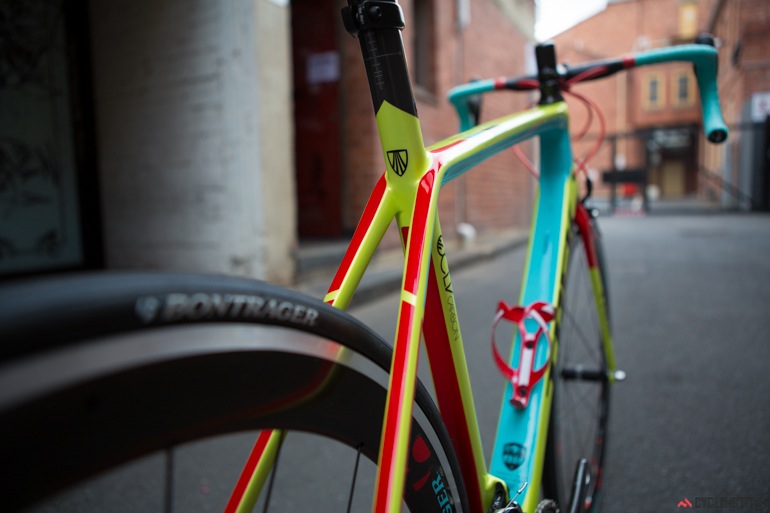
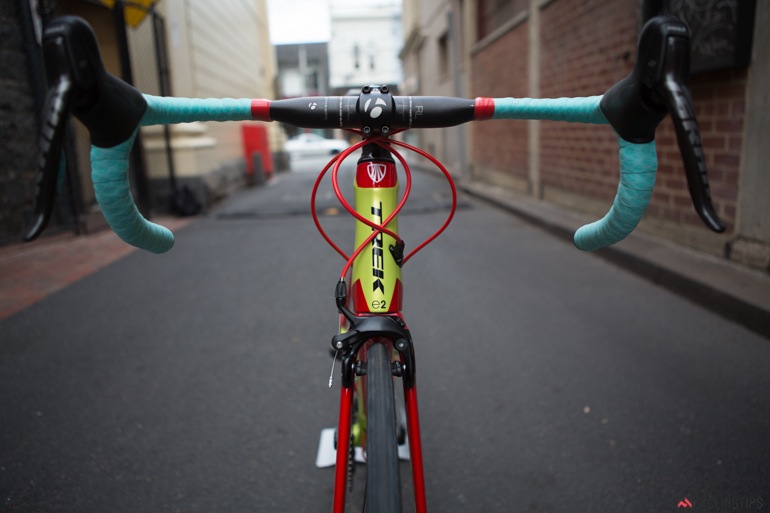
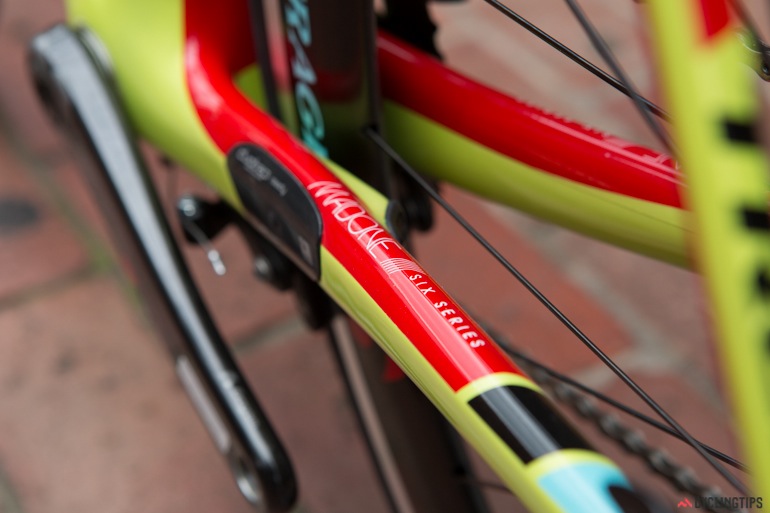
DuoTrap speed and cadence sensor integrated into the frame.
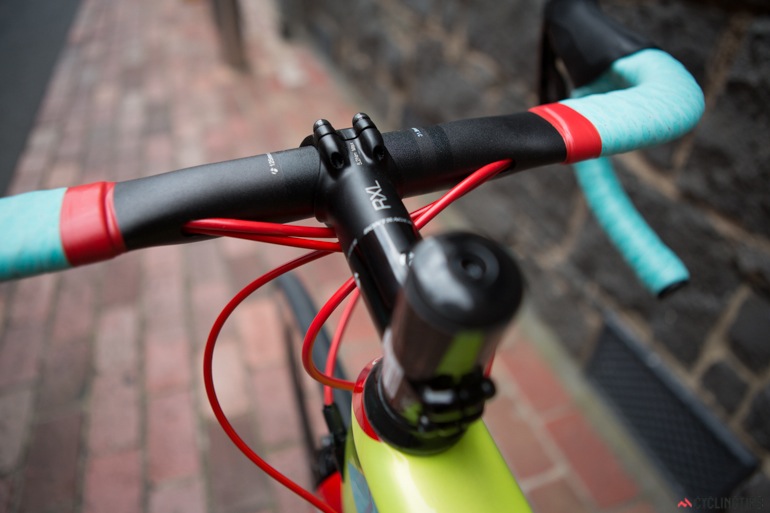
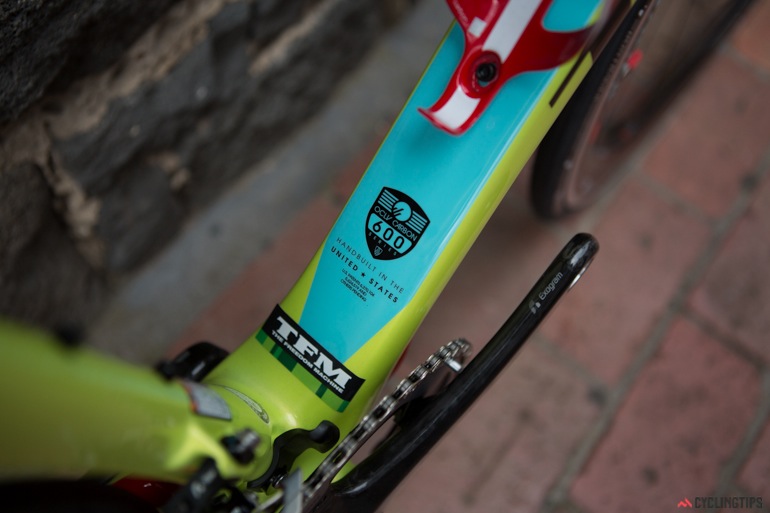


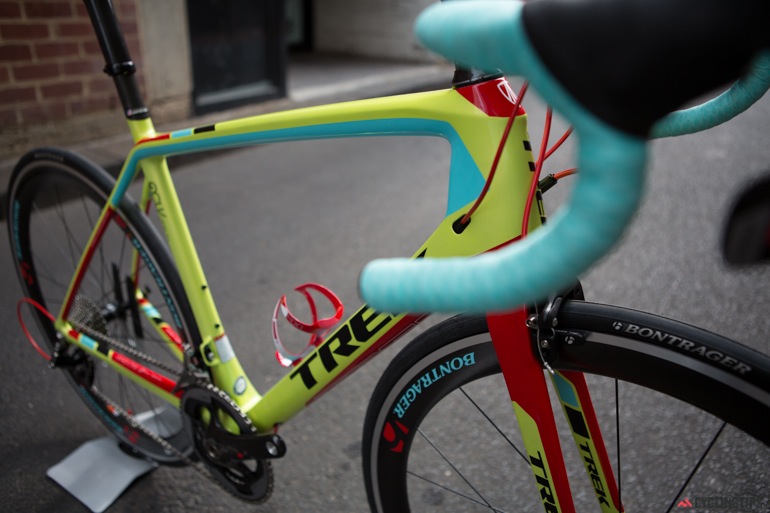
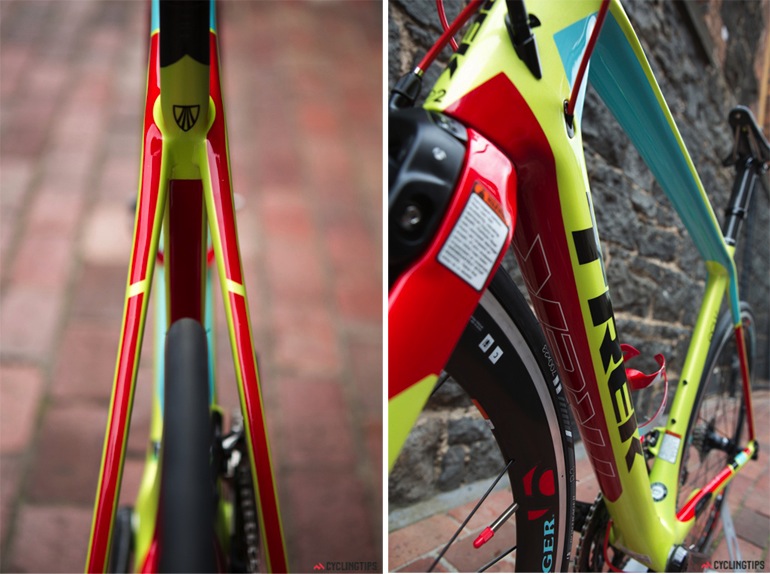
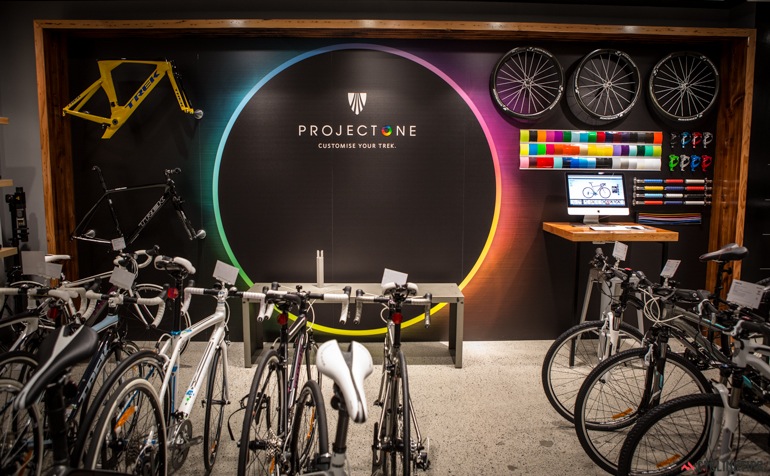
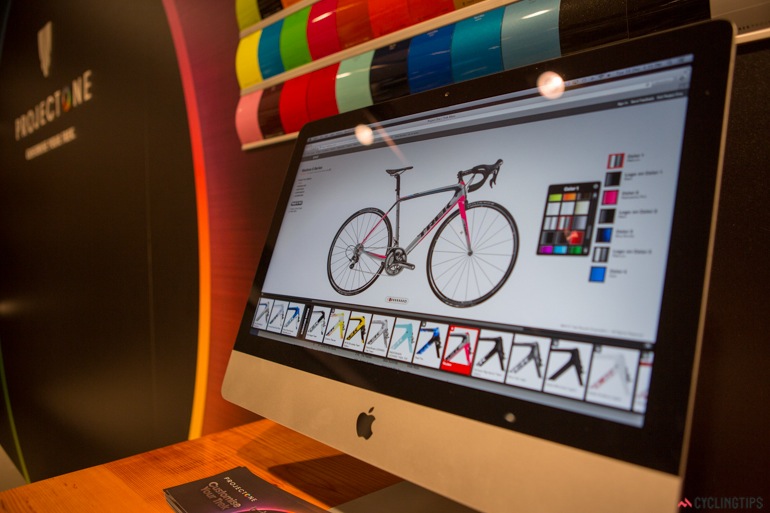

Project One allows you to customise paint scheme and nearly every component on your bike.
Do you own a Madone 7-Series? Why not login and rate it against our review?
WRAP-UP
- Comfort, handling and overall ride
- Project One customisation
- Bontrager Aeolus D3 clincher wheels
- Expensive, but there are lower models that suit tighter budgets
- I didn't care for the XXX Aero handlebars, but there are lots of other options available

